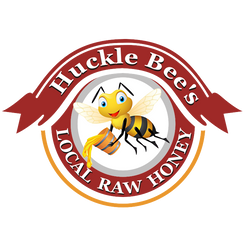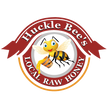Pollination
According to the website Pollinator.org, Somewhere between 75% and 95% [1] of all flowering plants on the earth need help with pollination – they need pollinators. Pollinators provide pollination services to over 180,000 different plant species and more than 1200 crops. That means that 1 out of every three bites of food you eat is there because of pollinators [2, 3]. If we want to talk dollars and cents, pollinators add 217 billion dollars to the global economy [4,5], and honey bees alone are responsible for between 1.2 and 5.4 billion dollars in agricultural productivity in the United States [6]. In addition to the food that we eat, pollinators support healthy ecosystems that clean the air, stabilize soils, protect from severe weather, and support other wildlife [7].
What do we know about their status?
Pollinator populations are changing. Many pollinator populations are in decline and this decline is attributed most severely to a loss in feeding and nesting habitats [8, 9]. Pollution, the misuse of chemicals, disease, and changes in climatic patterns are all contributing to shrinking and shifting pollinator populations. In some cases there isn’t enough data to gauge a response, and this is even more worrisome.
Pollinators need help, but we know how to help them! Scientists and research partners that have been studying pollinators for over three decades have been able to show that conservation techniques work. If everyone – home owners, local governments, national governments, and private industry – made the effort we could change the future for pollinators and secure our own.

Habitation area does count
Adding natural habitat areas into farm systems works. Farms that are closer to natural habitat produce more crop yield [9] because they attract more pollinators [10]. Adding habitat to farms systems works too – farms that have turned a potion of their fields into green space have gained back more overall yield [11]. Home owners can help too! Home gardens can and do attract pollinators [12], and in many cases suburbs and cities have been shown to have more diverse pollinator communities than nearby wildlands [13,14]. Pollinators don’t seem to be phased by city life, as long as there are plots and patches of flowers they will be visited by hungry bees [15,16]. Pollinator gardening near community gardens also increases urban agricultural yields [17]. If you build it, they will come and help you get bigger and better crops too!
From the U.S. Forest Service:
Bees are the champion pollinators!
In the United States, there are over 4,000 species of native bees. Familiar bees visiting garden flowers are the colorful, fuzzy, yellow-and-black striped bumblebees, metallic-green sweat bees, squash bees, and imported honeybee. These flower-seeking pollen magnets purposefully visit flowers to collect pollen and nectar for food for themselves and their young.
Energy Needs
All bees have very high-energy needs that must be met for their survival. Bees need key resources such as pollen and nectar from a variety of flowers. Bees need these resources for themselves and their progeny. Many bees need water in addition to nectar.
Nesting Habitat
Bee nesting habits vary greatly. For example:
- Mason bees construct nests from mud.
- Leafcutter bees use a "wrapper" of leaves, resin and sand.
- Carder bees harvest plant fibers.
Most bees excavate their nest tunnels in sunny patches of bare ground, while others seek out abandoned beetle burrows in dead tree trunks or branches. The majority of bees are solitary, but a few, like sweat bees, bumblebees, and honeybees, are social, living in colonies that consist of a queen, her worker bee daughters and a few males, the drones.
Bee Flowers
The flowers that are visited by bees are typically:
- Full of nectar
- Brightly colored with petals that are usually blue or yellow or a mixture of these (bees cannot see red)
- Sweetly aromatic or have a minty fragrance
- Open in daytime
- Provide landing platforms
- Often bilaterally symmetrical (one side of the flower is a mirror image of the other)
- Flowers are often tubular with nectar at base of tube
An example of a bee-pollinated flower is a snapdragon or Penstemon (pictured right). Snapdragon flowers have sturdy, irregular shaped flowers with landing platform. Only bees of the right size and weight can trigger the flower to open. Other bee species or other insects that are too small or too large are excluded.
Nectar Guides
Many of the flowers pollinated by bees have a region of low ultraviolet reflectance near the center of each petal. This region appears invisible to humans because our visual spectrum does not extend into the ultraviolet. However, bees can detect ultraviolet light. The contrasting ultraviolet pattern called a nectar guide. This guide helps a bee quickly locate the flower's center.
This adaptation benefits both the flower and the bee. The bee can more rapidly collect nectar and the flower is more effectively pollinated.
The first picture below is a flower as seen by humans. The second picture reveals the same flower as seen by bees. (Photos courtesy of Apalachicola National Forest.)


To help you get started with helping the bees, checkout this "Bee Smart Pollinator Gardener" App to help you with choosing the best pollination gardens!

